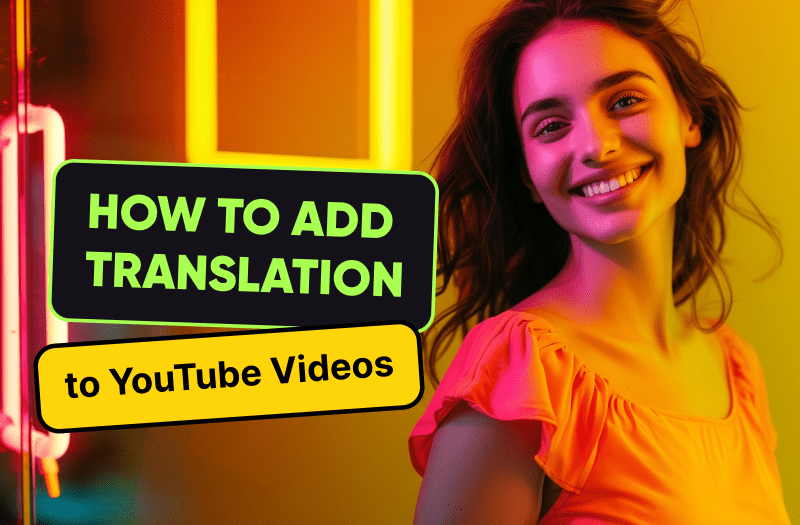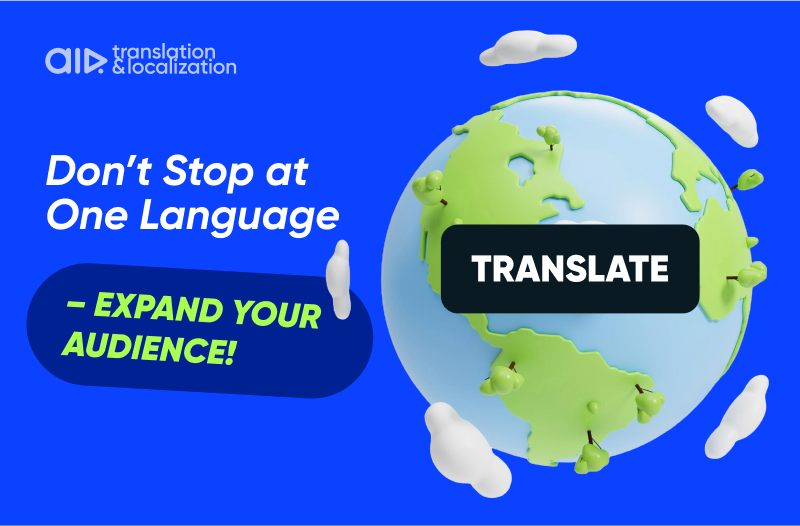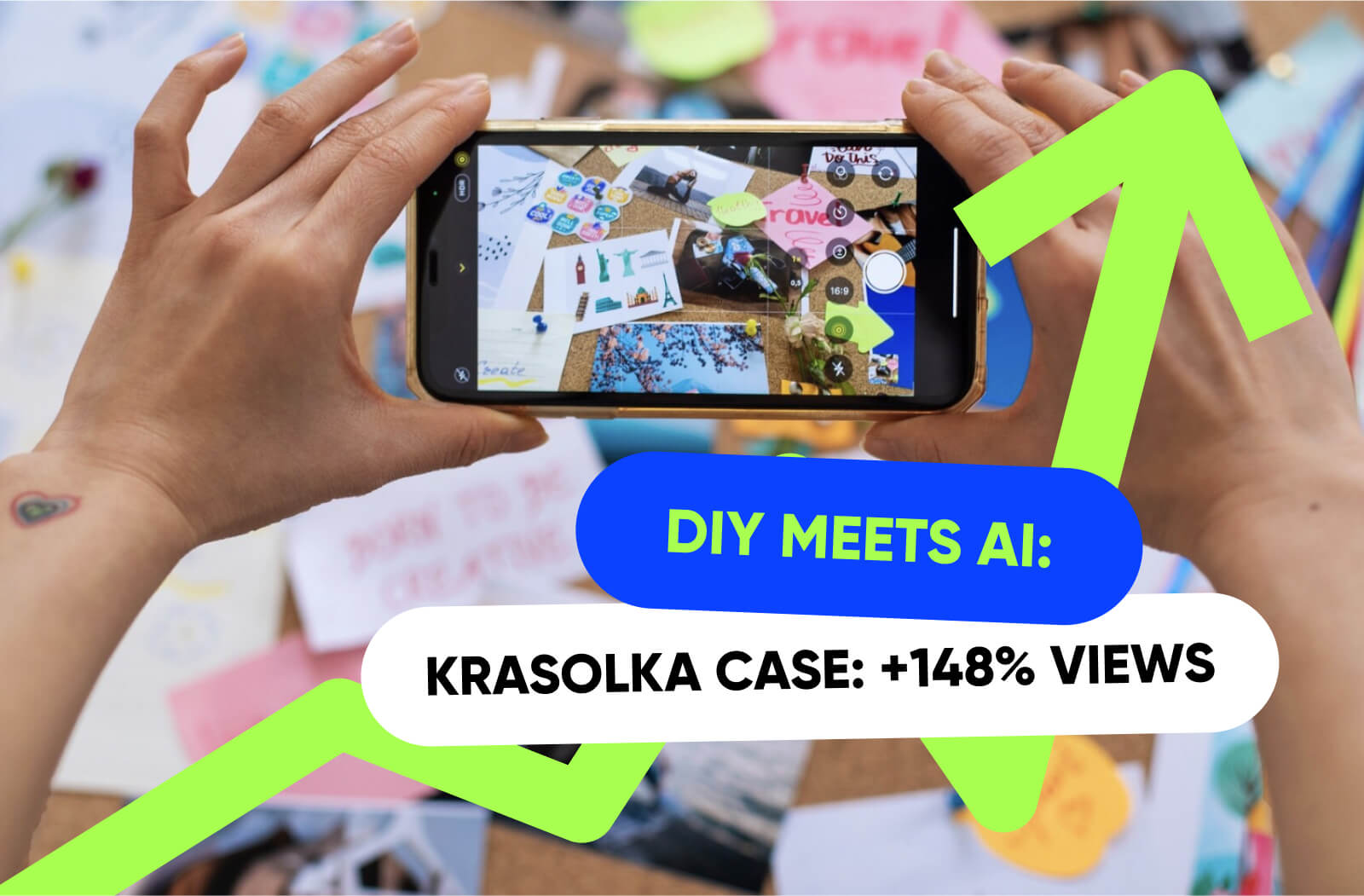
Not Sure Which Languages to Choose?
Want to reach a global audience on YouTube? Translation can work wonders for that matter!
Take the case of our partner Kids Diana Show, for instance. They launched 20 translated channels and raked in over 160 million subscribers across those channels, with a monthly global viewership of 2.5 billion. Impressive, isn't it? And the cherry on top: localizing your channel isn't as challenging as you'd think. Let's dive into key strategies, tactics, and AI tools to help you globalize through translation.
Key Takeaways
- Subtitles and Captions. Adding subtitles can increase engagement by 57% and improve accessibility.
- Multi-language Audio. Use YouTube’s multi-language feature for dubbing videos with voice actors or AI dubbing tools.
- Full Channel Localization. Consider creating fully translated channels for maximum reach and engagement.
- Cultural Sensitivity. Tailor your translations to account for cultural nuances and preferences.
- Use AI Tools. Leverage AI translation tools like Vidby, AIR Translate, and Descript for efficient and cost-effective localization.
The Power of Targeting Specific Language Groups
There are many English speakers on YouTube, like 1.45 billion of them! But there are also over 12 million English-speaking creators trying to get noticed. On the other hand, there are 602 million Hindi speakers, 548 million Spanish folks, 274 million Arabic listeners, and way fewer creators in those languages. Think about all the views you're missing by not translating your content. Let's explore the main steps to adapt your content and reach those audiences.
How to Translate Videos on YouTube
Kicking off your global journey, here are the three main strategies to get into multilingual content.
1. Start with Subtitles
57% of viewers prefer videos with subtitles, which is a winning strategy. Don't forget to translate the metadata too. YouTube Studio provides a nifty auto-caption feature, but occasionally, it could use manual finesse to ensure accuracy. If you're inclined, you can craft your subtitles in YouTube Studio. To add subtitles correctly, look at the official YouTube guide on this matter.
2. Go Multi-Language with Audio-Tracks
The next step in scaling through translation is adding audio tracks using YouTube’s multi-language feature. This allows creators to add dubbed audio to both new and existing videos — and yes, YouTube is already experimenting with AI dubbing for us. But AI dubbing doesn’t hold retention yet.
If you want your audio tracks to actually perform and not hurt your channel, you need the human touch. Professional voice actors are still the gold standard. It's the only way to ensure your localized audio resonates with viewers and keeps them watching.
3. Full Translation and Localization
Want to go really big? Creating fully translated channels is the way. For example, HZHtube Kids Fun localized their content into 12 languages and reached over 54 million subscribers globally. But let's be real, managing translations, coordinating audio recordings, and overseeing multiple channels can be a task. Luckily, there's relief: you can use dedicated YouTube services that can localize your channel seamlessly without you investing a dime. Learn more about effective strategies in our tools and strategies guide.
Want to go global?
YouTube recommends AIR Media-Tech as the go-to for content translation and localization. We handle everything from translating and dubbing your content into over 50 languages to customizing it for local audiences. Reach out to us, and let’s take your content global!
What to Translate in Your Videos
To ensure your videos are fully accessible to a global audience, focus on translating the following elements:
Title
An engaging title in the target language increases click-through rates and attracts more viewers. It ensures your content is easily understood and resonates with the local audience.
Description
A localized description improves search rankings and enhances engagement by providing essential context in the viewer’s native language. It helps communicate what the video is about and encourages more clicks.
Audio
Dubbing your videos into different languages significantly boosts retention and watch time. Viewers feel more connected when they can hear content in their own language, making the experience more immersive.
Subtitles
Essential for accessibility and catering to viewers who prefer reading along, watch without sound, or are hearing-impaired. Adding translated subtitles improves accessibility and engagement.
Metadata
Translating your YouTube metadata — including tags, keywords, and video descriptions — enhances discoverability by ensuring your content appears in search results for multiple language groups.
Tips on Earning Money by Translating Your Videos
Expanding your video content into multiple languages can open up new revenue streams. Here are some tips to monetize your multilingual content:
Ad Revenue
More views from diverse audiences can increase your ad revenue. New languages mean the flow of new people watching your content, ultimately leading to increased monetization opportunities. With higher global traffic, you can also attract better-paying ads.
Sponsorships
Brands targeting specific language groups might be interested in partnering with you. Many brands are looking to connect with non-English-speaking audiences, and having translated content gives you an advantage. A diverse audience means more sponsorship deals tailored to different demographics.
Merchandising
Create merchandise catering to different cultures and languages. Translating product descriptions and branding allows you to market your merchandise to international customers effectively. Unique, culturally relevant designs can also increase the appeal of your products.
Memberships and Donations
Encourage international viewers to support your channel through memberships or donations. Crowdfunding platforms also become more effective when you engage diverse audiences in their native language.
Instruction on How to Add Translation to Videos
Adding translations to your videos can be done in a few simple steps:
Upload Your Video
Start by uploading your video to YouTube. Make sure your video is properly titled and categorized to optimize its visibility. A well-organized upload process can enhance audience engagement and discoverability.
Access Subtitles Section
Go to YouTube Studio and select ‘Subtitles’ from the menu. This section allows you to manage all subtitle files, including multiple language options.
Add Language
Click ‘Add Language’ and select the desired language. This step helps categorize your subtitles correctly and allows YouTube to display them to the right audience. The more languages you add, the better your chances of reaching global viewers.
Upload Subtitles
Upload your subtitle file or use YouTube's auto-translate feature. While auto-translate is a quick solution, it’s recommended to review and edit the translations for accuracy. You can also use professional translation tools or services like AIR Translation Lab for higher-quality subtitles.
Review and Publish
Review the translations for accuracy and publish the video. Double-check grammar, context, and cultural appropriateness to ensure a seamless viewing experience.
Best YouTube Video Translation Tools
Many AI tools and translation services for creators are popping up, but not all are made equal. We spotlighted the ones that truly stand out. Here's the list for you:
This tool allows AI translation and dubbing in 70 languages. The kicker? Their AI dubbing sounds just like a real human voice.
This service from AIR Media-Tech handles all the heavy lifting, from dubbing and AI translation to full-on channel localization. And the best part? It requires no investment on your side.
This is an audio and video editing tool that provides sound molding and also features auto-transcription.
YouTube’s New Auto-Dubbing Feature In 2025
One of the most significant signals that YouTube is leaning heavily into translation is its new auto-dubbing feature. It's YouTube’s latest step toward helping creators reach global audiences — automatically dubbing videos into other languages using AI.
While this feature is still in its early stages, it represents a clear push by the platform to make multilingual content the norm rather than the exception. Some creators have been critical of the current voice quality, and we agree that the auto-dubs still lack the polish of a human or high-end AI voiceover. That said, YouTube has acknowledged this feedback and promised ongoing improvements.
Despite the early-stage quality, there’s one thing this tool is already great for: testing the waters in new regions. Auto-dubbing allows you to easily see where your content starts to gain traction without committing to full-scale localization. It’s a low-effort way to identify high-potential markets, which you can then prioritize for more tailored and professional translations.
Translation is becoming a central part of YouTube's global growth strategy. If the platform is betting on multilingual content, maybe it's time you do too.
YouTube’s Translation Standards: What You Need to Know
As YouTube pushes harder into multilingual content, it’s also refining how it evaluates and prioritizes translated videos. The platform’s algorithms now better recognize localized content, not just by detecting subtitles or dubbed audio, but by factoring in the quality and consistency of translation across metadata, titles, and channel content.
Creators who only translate subtitles but skip the title or description may see less traction compared to those who go all-in on full metadata localization. YouTube is also starting to favor creators who use multi-language audio tracks, especially as this aligns with their vision of a more inclusive, global platform.
What does this mean for you?
- Translations that are accurate, culturally sensitive, and cover all parts of the video (title, description, audio, subtitles) are more likely to get recommended.
- Low-quality, mismatched translations could even reduce engagement.
- YouTube is updating its best practices documentation more frequently, so keep up to date.
Did You Know?
Localized content can increase your YouTube views by up to 47%! Translation isn’t just about language; it’s about connecting with diverse audiences on a deeper level.
Translating and localizing your YouTube content is easier than ever with the right strategies, tools, and services. Reaching a global audience can significantly increase your viewership and subscriber base. And AIR Media-Tech is always here to help you on your journey to global success.





